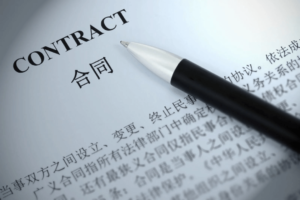Protecting inventions abroad is a crucial step for small and medium-sized enterprises (SMEs) looking to expand their market reach and secure their intellectual property rights. In today’s globalized economy, it is essential for SMEs to understand the importance of protecting their inventions in foreign countries. This blog post aims to provide SMEs with a comprehensive guide on how to protect their inventions abroad, covering topics such as international patent laws, conducting patent searches, filing patent applications, managing patent costs, enforcing patent rights, working with patent attorneys in foreign countries, and navigating cultural and language barriers.
Table of Contents
ToggleKey Takeaways
- Protecting your inventions abroad is crucial for SMEs to expand their market and prevent infringement.
- International patent laws and regulations can vary greatly, so it’s important to understand them before filing.
- Conducting a patent search is necessary to ensure your invention is novel and not already patented.
- Filing a patent application abroad requires careful consideration of tips and best practices to avoid costly mistakes.
- Managing patent costs and budgets can be challenging, but there are strategies to help SMEs stay within their means.
Why SMEs Need to Protect Their Inventions
For SMEs, protecting their inventions is crucial for several reasons. Firstly, it allows them to establish a competitive advantage in the market by preventing others from copying or imitating their inventions. By obtaining patent protection, SMEs can have exclusive rights to their inventions for a certain period of time, giving them the opportunity to commercialize and profit from their innovations.
Secondly, protecting inventions abroad enables SMEs to expand their market reach and tap into new customer bases. By securing patent protection in foreign countries, SMEs can prevent competitors from entering those markets with similar products or technologies. This not only helps SMEs establish a strong foothold in new markets but also allows them to attract potential investors or partners who value intellectual property rights.
On the other hand, failing to protect inventions can have serious consequences for SMEs. Without patent protection, SMEs risk losing their competitive advantage as competitors can freely copy or replicate their inventions. This can lead to a loss of market share and revenue for the SME. Additionally, without patent protection, SMEs may find it difficult to attract investors or secure funding as intellectual property rights are often seen as valuable assets.
Understanding International Patent Laws and Regulations
When it comes to protecting inventions abroad, it is crucial for SMEs to have a good understanding of the different patent laws and regulations in various countries. Each country has its own set of rules and requirements for obtaining patent protection, and SMEs need to navigate these complexities to ensure their inventions are adequately protected.
For example, some countries have strict novelty requirements, meaning that an invention must be new and not disclosed to the public before a patent application is filed. Other countries have different standards for patentability, such as requiring an invention to have an inventive step or be capable of industrial application. SMEs need to be aware of these requirements and tailor their patent applications accordingly.
Furthermore, SMEs should also consider the differences in patent examination procedures and timelines in different countries. Some countries may have faster or more efficient patent examination processes, while others may have longer waiting times. Understanding these differences can help SMEs plan their patent filing strategies and manage their expectations.
Conducting a Patent Search to Ensure Your Invention is Novel
Before filing a patent application abroad, it is essential for SMEs to conduct a thorough patent search to ensure that their invention is novel. A patent search involves searching existing patents and other sources of prior art to determine if an invention has already been disclosed or patented.
Conducting a patent search is important for several reasons. Firstly, it helps SMEs assess the novelty and inventiveness of their invention. If similar inventions already exist, it may be difficult for SMEs to obtain patent protection. By conducting a patent search, SMEs can identify any potential obstacles or challenges they may face in obtaining patent protection.
Secondly, a patent search can help SMEs identify any existing patents or technologies that may be relevant to their invention. This can provide valuable insights into the competitive landscape and help SMEs refine their invention or identify potential licensing opportunities.
When conducting a patent search, SMEs should consider using online databases, such as the World Intellectual Property Organization’s (WIPO) PatentScope database or the United States Patent and Trademark Office’s (USPTO) Patent Full-Text and Image Database. It is also advisable to seek the assistance of a patent attorney or agent who has experience in conducting patent searches.
Filing a Patent Application Abroad: Tips and Best Practices
Once SMEs have conducted a patent search and determined that their invention is novel, the next step is to file a patent application abroad. Filing a patent application can be a complex and time-consuming process, but with careful planning and preparation, SMEs can increase their chances of obtaining patent protection.
The first step in filing a patent application abroad is to determine the countries in which protection is desired. SMEs should consider factors such as market potential, business strategy, and budget when selecting countries for patent protection. It is also important to consider the differences in patent laws and regulations in each country and tailor the patent application accordingly.
When preparing a patent application, SMEs should provide a detailed description of their invention, including drawings or diagrams if necessary. It is important to clearly define the scope of the invention and highlight its novelty and inventiveness. SMEs should also consider including claims that define the specific features or elements of the invention that they wish to protect.
It is advisable for SMEs to seek the assistance of a patent attorney or agent when filing a patent application abroad. These professionals have the knowledge and expertise to navigate the complexities of the patent system and can help SMEs draft a strong and effective patent application.
Strategies for Managing Patent Costs and Budgets
Protecting inventions abroad can be costly, especially for SMEs with limited resources. However, there are strategies that SMEs can employ to manage their patent costs and budgets effectively.
One strategy is to prioritize countries for patent protection based on market potential or business strategy. SMEs can focus on filing patent applications in countries where they have a strong presence or where they anticipate significant market demand. By prioritizing countries, SMEs can allocate their resources more efficiently and reduce unnecessary costs.
Another strategy is to consider using the Patent Cooperation Treaty (PCT) system. The PCT system allows SMEs to file a single international patent application that is recognized in multiple countries. This can help streamline the patent filing process and reduce costs associated with filing separate applications in each country.
SMEs should also consider the option of licensing their inventions to third parties. Licensing allows SMEs to generate revenue from their inventions without incurring the costs of manufacturing and marketing. By licensing their inventions, SMEs can also benefit from the expertise and resources of the licensee, who may have a stronger market presence or distribution network.
Enforcing Your Patent Rights Abroad: Legal Options and Considerations
Once SMEs have obtained patent protection for their inventions abroad, it is important to be aware of the legal options and considerations for enforcing their patent rights.
Enforcing patent rights abroad can be challenging due to differences in legal systems, language barriers, and cultural differences. SMEs should consider working with local patent attorneys or agents who have knowledge of the local legal system and can provide guidance on the best course of action.
In some cases, it may be necessary to initiate legal proceedings to enforce patent rights. This can involve filing a lawsuit against an infringing party or seeking an injunction to prevent further infringement. SMEs should be prepared for the costs and time associated with legal proceedings and weigh the potential benefits against the risks.
Alternative dispute resolution methods, such as mediation or arbitration, may also be considered as a less costly and time-consuming option for resolving patent disputes. These methods can provide a more flexible and confidential process for resolving disputes, but it is important to ensure that any agreements reached are enforceable in the relevant jurisdictions.
Working with Patent Attorneys and Agents in Foreign Countries
Working with patent attorneys and agents in foreign countries can be beneficial for SMEs looking to protect their inventions abroad. These professionals have the knowledge and expertise to navigate the complexities of the local patent system and can provide valuable guidance and support throughout the patent process.
When selecting a patent attorney or agent in a foreign country, SMEs should consider factors such as their experience, expertise, and reputation. It is important to choose a professional who has a good understanding of the local patent laws and regulations and has experience working with SMEs.
Communication is key when working with patent attorneys and agents in foreign countries. SMEs should ensure that there is clear and open communication with their chosen professional, and that they are kept informed of any developments or updates regarding their patent application.
Navigating Cultural and Language Barriers in International Patent Protection
Navigating cultural and language barriers can be a challenge when it comes to international patent protection. SMEs should be aware of these challenges and take steps to overcome them.
One challenge is the differences in business practices and communication styles. In some cultures, direct communication may be preferred, while in others, indirect or subtle communication may be more common. SMEs should be aware of these differences and adapt their communication style accordingly.
Language barriers can also pose challenges when working with patent attorneys or agents in foreign countries. It is important to ensure that there is clear and effective communication between all parties involved. This may involve using translation services or hiring bilingual professionals who can facilitate communication.
Cultural differences can also impact the interpretation of patent laws and regulations. What may be considered acceptable or common practice in one country may not be the case in another. SMEs should be aware of these cultural differences and seek guidance from local professionals to ensure that their patent applications comply with local laws and regulations.
The Importance of Protecting Your Inventions Abroad for SMEs
In conclusion, protecting inventions abroad is crucial for SMEs looking to expand their market reach and secure their intellectual property rights. By obtaining patent protection, SMEs can establish a competitive advantage, attract potential investors or partners, and prevent competitors from copying or imitating their inventions.
To effectively protect inventions abroad, SMEs need to have a good understanding of international patent laws and regulations, conduct thorough patent searches, file patent applications strategically, manage patent costs and budgets, enforce patent rights when necessary, work with patent attorneys and agents in foreign countries, and navigate cultural and language barriers.
By following these best practices and seeking the assistance of professionals when needed, SMEs can increase their chances of successfully protecting their inventions abroad and maximizing the value of their intellectual property.
If you’re interested in protecting your inventions abroad, you may also find the article “The Crucial Role of Patent Protection in China Amidst Rising Global Exports” informative. This article discusses the importance of patent protection in China, especially considering the country’s increasing role in global exports. It highlights the challenges and opportunities that SMEs face when seeking patent protection in China and provides valuable insights into navigating the patent system in this market. Check out the article here.








